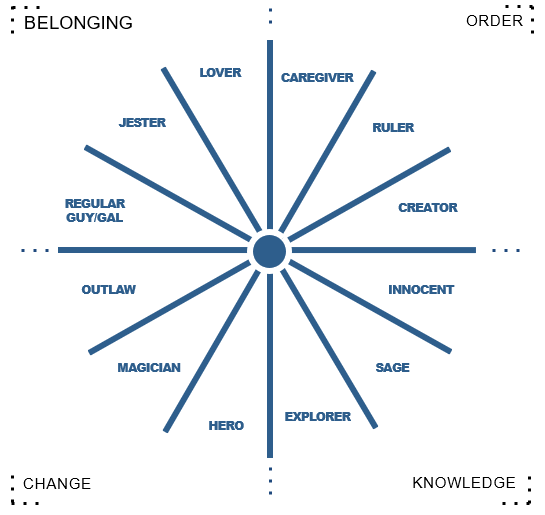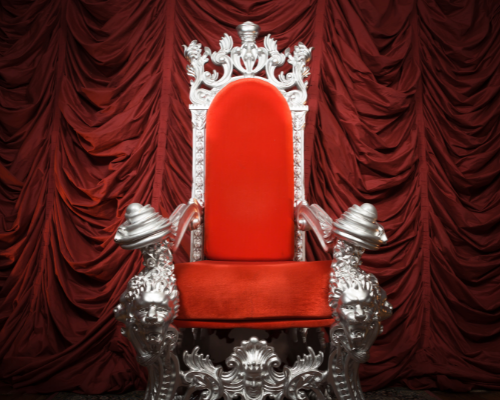Changing with the times is vital for all companies, but especially for B2B companies. The marketing world is changing every day and businesses that fail to embrace change can easily fall behind. In today’s marketing world people want brands to connect with them on a human level. To do this, and highlight your brand’s personality, you must focus on its archetype. The archetype transforms sales pitches and value propositions into concepts that people can understand. As times change, so will your marketing strategy.
However, one thing should remain constant, your brand. To ensure your brand’s personality is carried through multiple channels no matter the marketing trend or medium, you’ll need to identify your brand’s archetype. The world’s leading organizations did not achieve their status by magic. Instead, they developed a brand archetype that reflected their personality and resonated with their target audience. And it’s time you did the same.
By understanding both your company and your customer, you will be able to create a brand archetype that will help you appeal to your audience.

The 12 Types of Brand Archetypes
Don’t know where you fall under? Take a look at the 12 types of brand archetypes to choose from.
1. The Hero
Hero brands inspire and motivate their customers. They are competitive and aim for success. Indeed, as their name implies, they are superheroes.

2. The Magician
They make buyers feel extraordinary and magical when interacting with their brand.

3. The Rebel
The rebel goes against the grain and doesn’t side with social norms. As a result, they are likely to be risky or vulgar in their marketing.

4. The Explorer
Encourage customers to take risks and explore the world.

5. The Sage
They want people to trust them as a reliable source. Instead of trying to impress their audience, they provide trustworthy information.

6. The Innocent
As the name implies, innocent brands are innocent, happy, and carefree. Indeed, their messaging is friendly and appeals to the softer side of people.

7. The Creator
Creator brands are innovative, creative, and think outside the box. Likewise, they are visionaries.

8. The Ruler
Rulers strive to lead others to be powerful, dominant individuals.

9. The Caregiver
Caregiver brands aim to educate, assist, and support their consumers. Without a doubt, they place a high priority on customer care and safety.

10. The Everyman
Brands that appeal to the everyday individual to satisfy their needs. Indeed, these brands wish to satisfy basic needs with a predictable product.

11. The Jester
There is nothing more fun or lighthearted than Jester brands. Overall, they are focused on providing entertaining experiences.

12. The Lover
Their products make people feel good and special about themselves. In addition, lover brands typically sell premium products.

Where Do You Fit In?

All in all, your brand identity is up to you. Check out these 3 tips to help create and shape your brand archetype.
Review Your Company Values and Mission Statement
Nothing defines your company better than your core values and mission statement. Looking at these two assets can help you narrow down which brand archetype you fall into, and which makes sense for your business.
Create based on Emotion
Simply put, emotional appeal works. With that in mind, think about what you want your audience to feel when connecting with your brand, and which brand archetype will help you achieve it.
Consider Your Audience
You know your company’s values, mission statement, and the emotions you want to convey. But it all means nothing if you haven’t considered your audience. Take a look at your audience and think through how they would react to each brand archetype. For instance, would that archetype resonate with them? Can they relate to it? Considering your audience can help you shape your brand archetype.
Top 3 Reasons Why You Need to Know Your Brand Archetype

1. Know Who You Are
Knowing your archetype gives your brand personality and meaning. For example, you may have a specific niche or values that attract certain buyers. Knowing who you are as a brand can help you highlight what you stand for and differentiate your brand from competitors.
Knowing and defining your brand archetype allows your team of content writers, marketers, and salespeople to spread your message consistently. It’s particularly useful when you have a growing organization and more people join, making it harder to create a consistent experience.
2. Enhance Brand Loyalty
Today’s consumers buy more than just a product. They buy the meaning and reputation attached to it. Let’s look at Apple as an example. When it comes to loyalty, Apple has a fan base that’s tough to beat. No matter the product, it has built a bond with consumers to where no matter the product you’re sure to see a long-line and even people camping outside to get their hands on the newest gadget. Indeed, this is what you want to achieve for your business. Overall, consumers should think of your brand first. To do this, you’ll need to create strong values, a mission statement, and a vision based solely on your brand archetype.
3. Develop Stronger Connections
Marketing strategies become much easier to improve and implement once you know what your brand archetype is. How? Brand archetypes influence how your brand interacts with its audience.
No matter the medium or new trend, your archetype can withstand the changes that come with time. For example, your business may have started marketing by word of mouth. Then moved on to print advertising. And finally, digital marketing. However, your brand’s voice should stay consistent throughout each change. That can only be done by creating a strong brand archetype. Overall, this uniqueness is what will make your brand come to life for people and can help them gravitate toward your business.
360Connect is a caregiver brand. In addition, we provide suppliers and buyers with educational content and the support they need.
- Check out the Learning Center. Without a doubt, full of tips to achieve success.
- Find Out How You Can Improve Sales and Grow Your Business with Our Revenue Growth Program

